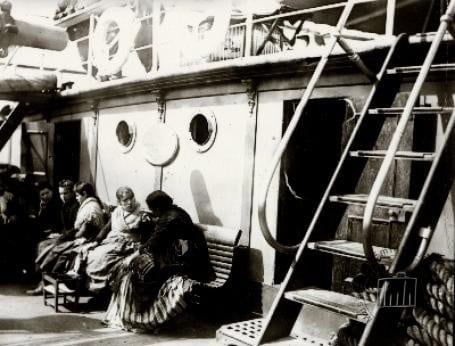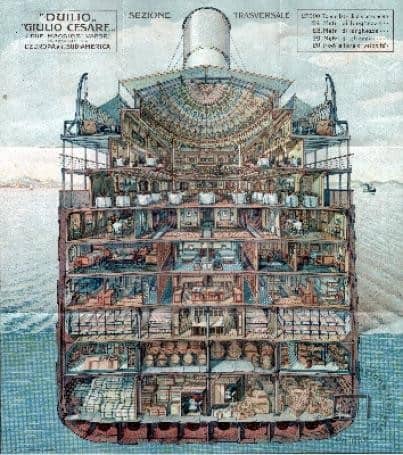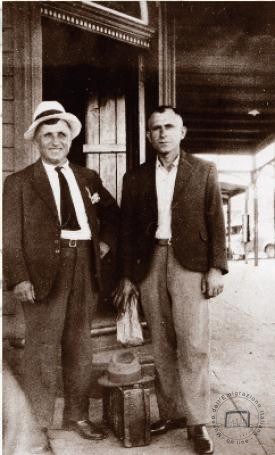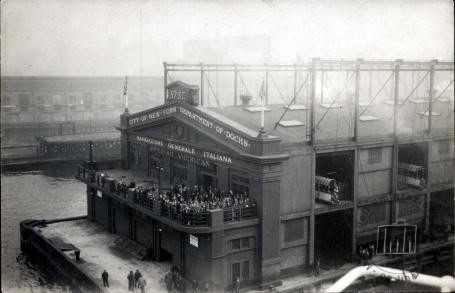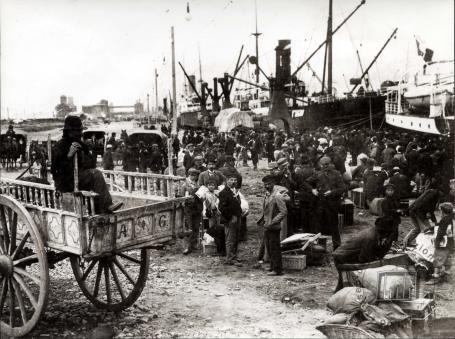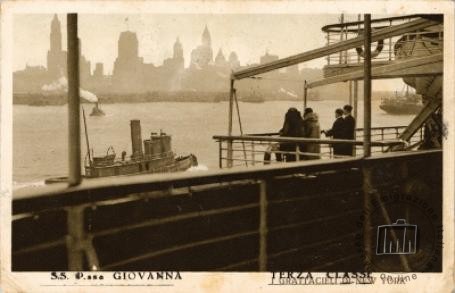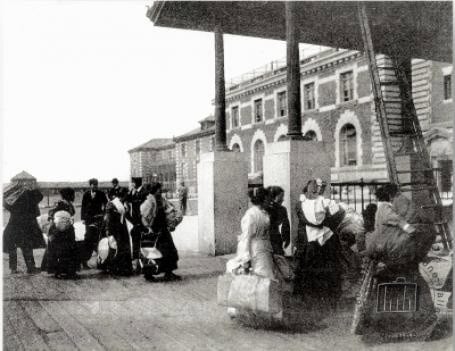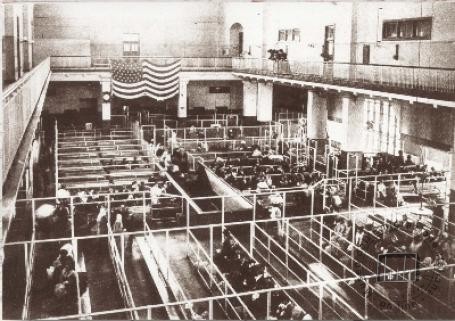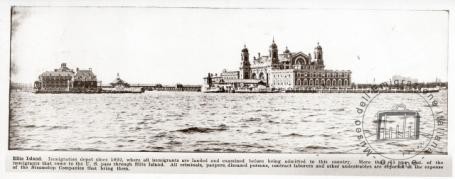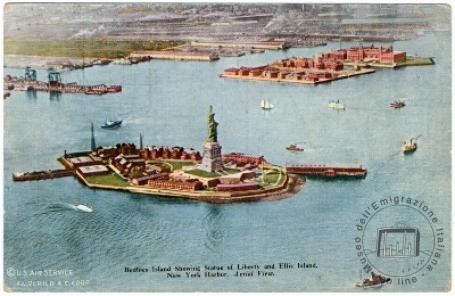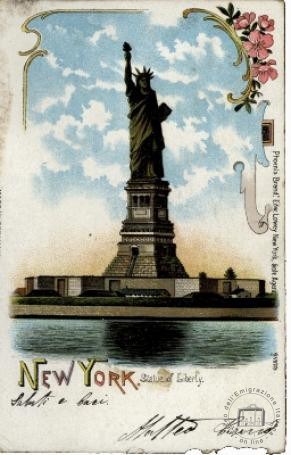Museum - The journey and the arrival
On board
Until the end of the nineteenth century, emigrants were transported in old sailing ships .The journey, could last up to a month in unimaginable living conditions. The bunks, in the lower part of the ship, mostly received air only from the hatches. As a result, in the morning, whatever the weather, everyone was forced to move to the decks.Diseases--pulmonary and intestinal especially--were widespread and mortality high.
The suitcase has long been the symbol of emigration; first there was the "bundle": a piece of cloth in which to wrap things to take with you. And in the bundle, or suitcase, was a whole "world": memories of the family, a note to a relative or countryman, a letter of introduction that, it was hoped, might be useful..... With the construction in the 1920s of the large cruise steamers that also carried emigrants, travel time and living conditions on board improved.
Arrived at last!
In the earthly paradise promised by the "Guides," things were actually different. Upon arrival, immigrants realized that they had come to America as it was and not the America they had dreamed of. At customs they were subjected to heavy bureaucratic formalities, many turned away because they had crippling diseases. Those admitted were treated as in the slave market. In Argentina and Brazil, once on the mainland they were housed in prison-like facilities-the immigrant hotel and hospedaria. The strength of the emigrant was the "migratory chain," the network of relatives, friends, and fellow countrymen who, having already experienced emigration, sought to facilitate his or her integration into the new country.
The "Merica"
In the U.S., upon arrival in New York, emigrants were disembarked at Ellis Island for screening Strict regulations operated a drastic selection: one was turned away for illness, extreme poverty, youthful or too advanced age, marital status (women and orphans without support in the new country).
In 1917 the Literacy Act was passed,an illiteracy law that imposed a squeeze on immigration and affected so many Italians especially southerners. Further restrictions occurred, in 1921 and 1924, with laws that set the number of immigrants annually.
Miss Liberty
The Statue of Liberty was donated by France to the United States and became linked to the phenomenon of emigration That beautiful lady seemed to be as big as America and as big as the emigrants' dreams of "making Merica".Instead, upon arrival in New York harbor, emigrants were disembarked at Ellis Island and subjected to scrutiny and often humiliation. Yet, in the imagination of many immigrants, the Statue of Liberty became America; then they discovered that the streets were not paved with gold and that it would be up to them to build those streets.


